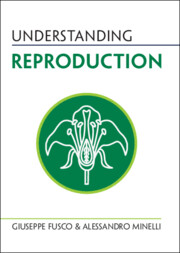Book contents
- Understanding Reproduction
- Series page
- Understanding Reproduction
- Copyright page
- Reviews
- Contents
- Foreword
- Preface
- Acknowledgements
- 1 Individuals and Reproduction
- 2 Reproduction in the Life Cycle
- 3 Reproduction Without Sex
- 4 Reproduction with Sex
- 5 Two-Parent Sexual Reproduction
- 6 One-Parent (or Nearly so) Sexual Reproduction
- 7 Development of Sexual Traits
- 8 Widening the View: Reproductive Strategies
- Concluding Remarks: Difficult Boundaries
- Summary of Common Misunderstandings
- References and Further Reading
- Figure Credits
- Index
1 - Individuals and Reproduction
Published online by Cambridge University Press: 27 July 2023
- Understanding Reproduction
- Series page
- Understanding Reproduction
- Copyright page
- Reviews
- Contents
- Foreword
- Preface
- Acknowledgements
- 1 Individuals and Reproduction
- 2 Reproduction in the Life Cycle
- 3 Reproduction Without Sex
- 4 Reproduction with Sex
- 5 Two-Parent Sexual Reproduction
- 6 One-Parent (or Nearly so) Sexual Reproduction
- 7 Development of Sexual Traits
- 8 Widening the View: Reproductive Strategies
- Concluding Remarks: Difficult Boundaries
- Summary of Common Misunderstandings
- References and Further Reading
- Figure Credits
- Index
Summary
Ever since living beings arose from non-living organic compounds on a primordial planet, more than 3.5 billion years ago, a multitude of organisms has unceasingly flourished by means of the reproduction of pre-existing organisms. Through reproduction, living beings generate other material systems that to some extent are of the same kind as themselves. The succession of generations through reproduction is an essential element of the continuity of life. Not surprisingly, the ability to reproduce is acknowledged as one of the most important properties to characterize living systems. But let’s step back and put reproduction in a wider context, the endurance of material systems.
Keywords
- Type
- Chapter
- Information
- Understanding Reproduction , pp. 1 - 28Publisher: Cambridge University PressPrint publication year: 2023

